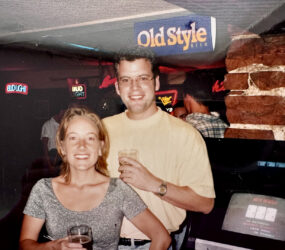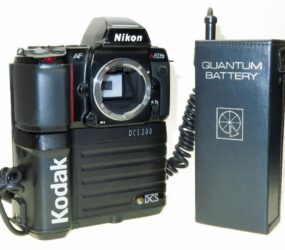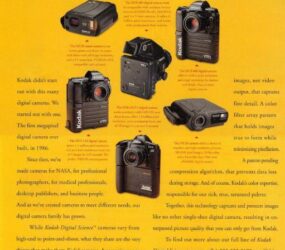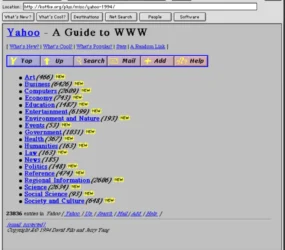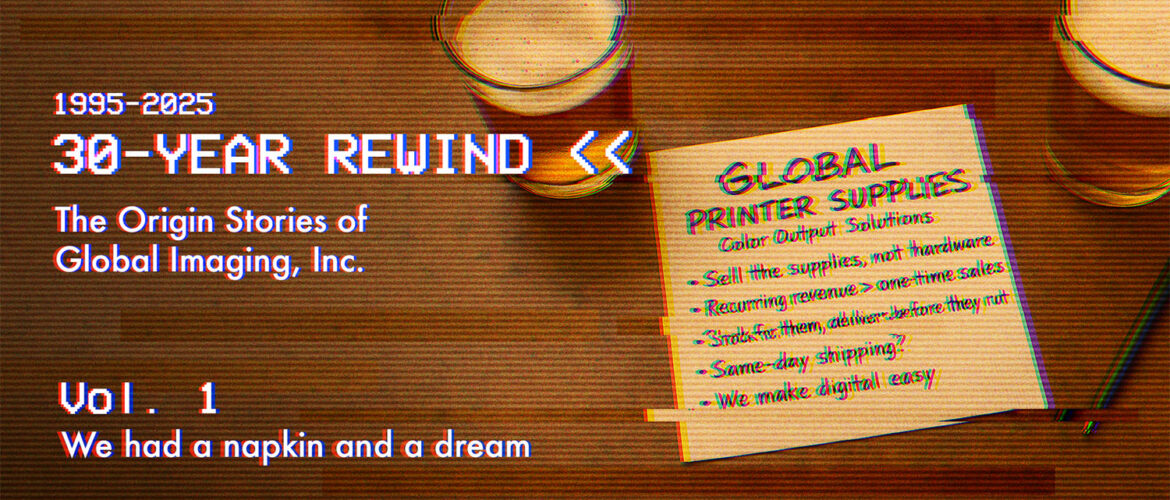
30-YEAR REWIND < < We had a napkin and a dream
In late 1994, Greg and I bought our first place together—a little 864 sq ft condo in Boulder, Colorado. It felt huge to us at the time. We were young, excited, and both working full-time at a local camera store, but in completely different worlds.
Greg was in “industrial sales,” flying around the country demonstrating digital printers and cameras. The Kodak 7720 transfer printer and the DCS 200 digital camera. The Kodak DCS 200 camera images were a massive 1.54MB each. These weren’t the kind of things you picked up at Best Buy. This was cutting-edge, bleeding-edge stuff— he was selling this digital technology, sold almost exclusively to government defense departments. His job was to show how digital imaging could integrate with the “World Wide Web,” (which was still this mysterious, nerdy thing most people hadn’t even seen yet) to give defense positioning in real time.
Meanwhile, William was doing inside sales for that same department, handling corporate accounts, and I (Tara) was managing the photo labs and customer service—back when every photo that came through the door started as raw film: color, black and white, or slides. I spent my days with chemicals, enlargers, and the gentle chaos of customers wanting one-hour photo development.
One night, over drinks, everything changed.
Somewhere between the second and third round, Greg and I found ourselves talking shop (as usual), venting about how the printers he was selling—Kodak 7720s—were a tough business model. These machines sold for around $30,000 each, but once installed, they didn’t need to be replaced for years. Great for customers. Not great for a guy trying to make a living off commission.
But here’s what we realized: the real money wasn’t in the printers—it was in the supplies. Ink, substrates, parts…these customers were spending just as much on supplies every year as they had on the printers themselves. And most of them were going straight to Kodak or whoever manufactured them, for those supplies—passively, reactively, and often urgently.
We had an idea: what if we changed that?
What if we were the ones selling the supplies—but with service? What if we tended to those accounts proactively, helping them stay ahead of their needs so they weren’t scrambling to overnight orders across the country? What if we stocked it for them and shipped it according to their rhythms?
That night, we literally sketched out a plan on a bar napkin. We were going to start a company. A global one. (We really liked that word.)
We called it Global Printer Supplies. And in that moment, it felt like the start of something huge.
WHY IT MATTERED
This moment shaped the core of who we became:
A company built not just on technology, but on service.
Anticipating needs. Taking care of the little things. Being there before the rush.
That napkin sketch became our mission.
But it wasn’t just about building a business. We were genuinely lit up by what was happening in the world. Digital printers, the internet, the rise of new tools—it felt like magic. We didn’t just want to sell it—we wanted to share it. To help people use it. To help them love it.
Thirty years later, we still feel that way.
The tools have changed. The pace is faster. But the spark? Still there.
OTHER POSTS IN THIS SERIES
Intro: 30-YEAR REWIND < < The Origin Stories of Global Imaging, Inc.
Volume 1: 30-YEAR REWIND < < We had a napkin and a dream
Volume 2: 30-YEAR REWIND < < Microbrews, floppy discs & a business plan
Volume 3: 30-YEAR REWIND < < Non-Competes, Snowstorms & the Beastie Boys
Volume 4: 30-YEAR REWIND < < The Business Plan, the Basement, and the Mac that Took All Day to Save
Volume 5: 30-YEAR REWIND << Dialing for Dollars, Melting Crayons, and How a Piece of Gum Almost Ended it All
Volume 6: 30-YEAR REWIND << Saved by Transparency Film (and a Little Luck)
Volume 7: 30-YEAR REWIND << One Car, No Dolly, and 250 Sheets of Destiny
Volume 8: 30-YEAR REWIND < < From a Basement in Boulder to an Industry Legacy

